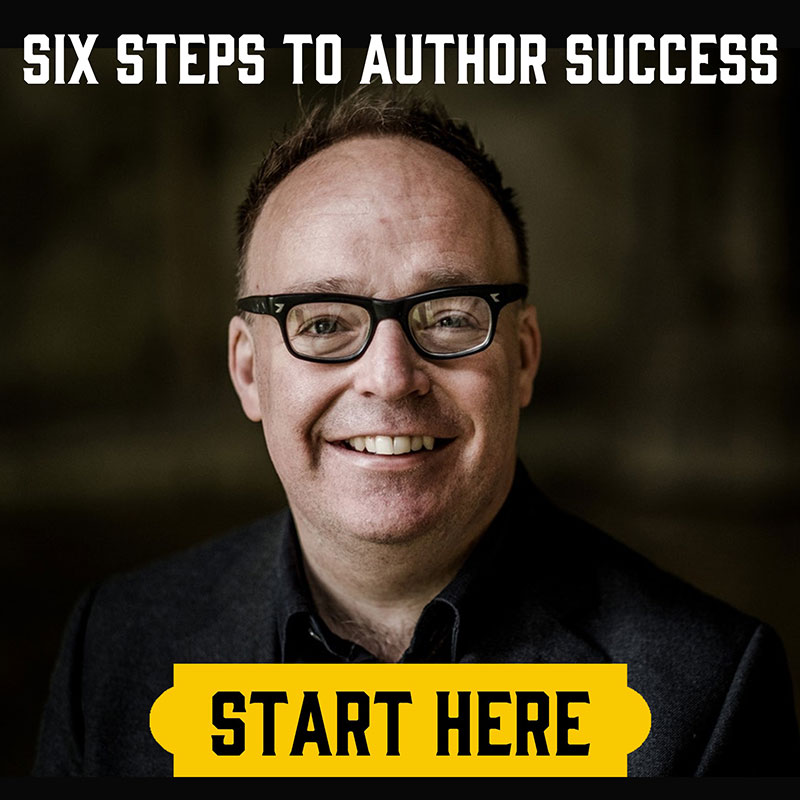How to Boost Your Backlist Sales

Publishers used to have one major marketing strategy: push new releases hard. It was all about the front list, which made sense when print was king and physical bookstores returned copies of new releases that didn’t sell well. Nowadays, however, the internet has changed the industry. The biggest bookstores are digital with infinite shelf space that allow publishers to sell books forever. Authors can also publish themselves so have amassed a huge market share.
To stay profitable, traditional publishers have merged, swallowing competitors to benefit from greater catalogues of intellectual property and economies of scale. The Big 6 became the Big 5. And now that Penguin Random House is reportedly buying Simon & Schuster’s 35,000 titles, they’re about to become the Big 4. Evidently, they’ve learnt that books that have the opportunity to sell forever do sell forever. This strategy has kept them alive.
This focus on backlist, however, is not purely a traditional publishing phenomenon. Many indie authors have learned the same lesson. Starting a writing career is hard when you have few books and little business experience. Most writers don’t sell many copies of their first few books. It’s only as they build their brands and become proficient marketers that they see their new releases skyrocket – and their old books rise up the charts to join them. After that, launching new books becomes a secondary priority, far behind stoking the fires of the backlist.
You see, put simply, most successful authors learn that twenty backlist titles selling consistently can dwarf the sales spike of a single book launch over the course of a year. What’s more, perennial sales stabilise your income, helping you to avoid huge peaks and troughs. Sounds good, doesn’t it? Here are five strategies you can use to boost your backlist and achieve that security for yourself.
Content Marketing
Not all marketing methods cost money. Some, like content marketing, only require time and effort, which can help you when you’re publishing on a shoestring. Lacking a marketing budget, some authors appear as podcast guests. Others write blog posts or pitch article ideas to journalists, using them as product placement vehicles for their books. The effectiveness of such methods is hard to measure because you can’t accurately track the sales they generate. Having said that, the digital footprint of these appearances does have the potential to scale without any maintenance.
This isn’t the case with paid advertising. Take Facebook or Amazon ads, for example. Both can be fantastic at driving sales but both require constant tweaking. Leave them for too long and their profit margins shrink. Stop adding new keywords or targets and you hit a sales plateau. By comparison, content marketing provides true passive income, with some readers stumbling upon your content weeks, months or even years after you created it. The more pieces of content you add, the more retail space you take up on the internet and the more you show up in search results. Just like an investment, the results of your effort compound over time and continue to deliver results even if you take a break.
Permafree First in Series
Permafree is a topic of contention in the indie author community. If you’re not familiar with the term, it refers to a “permanently free” book that authors often give away to build their audience. How it works is simple: an author drops the price of one book to zero dollars on all non-Amazon platforms then emails Amazon to ask them to price-match so that it’s also free there. Free books tend to get downloaded far more frequently than paid ones, therefore, driving traffic and attention to everything written by the same author.
You might question the effect of giving away one of your books but, if you look at the stats, it’s sound advice. Up-to-date research conducted by Written Word Media in 2020 indicates that, out of 1,000+ authors surveyed, those who earn six figures or more are “the most likely to have a book listed as free at the time of taking the survey.” The report suggests that authors with a large backlist “have started making books permanently free as a way to drive consistent downloads.” And therein lies the caveat. Permafree titles are proven to lure readers into buying paid sequels. You just have to ensure that you have good read-through and a large enough backlist to make this a viable strategy.
Cycle Promotions
If your backlist isn’t large enough to warrant a permafree, or you just don’t like the idea of giving away a book, then cycling temporary promotions is your next best option. This can come in the form of a limited-time giveaway or just heavy discounts on your ebooks or audiobooks, which typically entails dropping a full-price book to between $0.99 and $2.99. Running a limited promo for a few days can supercharge the traffic to a book, in turn influencing readers to check out your other books in the process. All this happens without you having to lose the long-term income stream of that discounted book.
Cycling through backlist titles is a common strategy for high-earning authors. Many concentrate their marketing efforts into a small time-period to get the best out of it, stacking features from a range of book discount newsletter sites like BargainBooksy and Robin Reads, sometimes even scoring a coveted BookBub Featured Deal. To enhance your exposure and results further, you could organise newsletter swaps with authors in your genre. All of these methods combined usually shoot books higher into their respective charts and inspire halo sales for the rest of the series.
Release New Formats and Sets
Stats suggest that not every person who encounters your books will buy a copy. And your chances of converting every browser into a reader lowers further if you only release your work in ebook format. Some people don’t like the reading experience. Others want a physical product they can give as a gift to another person. And some need a hands-free reading experience that they can take on the go because they are too busy to sit down and read, in which case, an audiobook is the preferred option.
By releasing your books in more formats over time, you expand their potential audience and nurture more opportunities for word-of-mouth virality. Traditional publishers launch a new book in multiple formats on launch day to maximise this effect, but it’s not necessary. If you’ve already released a few ebooks then following up with print and audio editions can reinvigorate interest in them. Firstly, it enables you to reach readers that previously wouldn’t have been interested. Secondly, the new edition gives you an excuse to keep contact with your existing readers, helping them to remember you in between launches. More formats might tempt them, but if they don’t, your email or social media post might persuade them to buy the digital version after all.
PPC and PPM Ads
PPC stands for pay-per-click and is used in advertising to describe campaigns that deliver on a pay-per-click basis. For every click an ad receives, you pay a small fee. PPM, or pay per mille, is an equally common advertising measurement. Instead of clicks, however, PPM ads require you to pay a certain amount for every 1,000 impressions. Both advertising strategies work for authors with varying degrees of success, depending on the advertising platform and a multitude of other factors. Which you decide to use is up to you.
What’s interesting about this type of advertising is that you can run it constantly for all of your books via platforms like Facebook, Amazon and BookBub. Yes, you have to monitor your costs and target effectively to remain profitable, but that is all achievable when you know what you’re doing. Authors who have mastered online advertising relentlessly drive traffic to their backlists, garnering sales long after a launch. If your backlist sales have wilted then advertising in this way is one of the most effective sales-boosting tactics in your arsenal. As long as you keep refreshing your ad graphics, copy and keywords, there’s no limit to the potential of online advertising, nor is there an expiry date on your books. In theory, master this skill and you can continue to sell your backlist forever.
It’s worth noting that, while fancy tactics are important, the length and quality of your backlist trumps any strategies you use to promote it. Follow the advice in this blog post while also publishing new titles that readers love and you will grow your audience. The bigger your backlist, the easier this process becomes and the more your books evolve into an autonomous, cross-selling machine.

Daniel Parsons
Dan Parsons is the bestselling author of multiple series. His Creative Business books for authors and other entrepreneurs contains several international bestsellers. Meanwhile, his fantasy and horror series, published under Daniel Parsons, have topped charts around the world and been used to promote a major Hollywood movie. For more information on writing, networking, and building your creative business, check out all of Dan’s non-fiction books here.
Grab Your SPF Freebies!
Sign up to receive your SPF starter package, which includes a free 3 part video series on getting started with FB ads, and inspirational and educational weekly emails.
